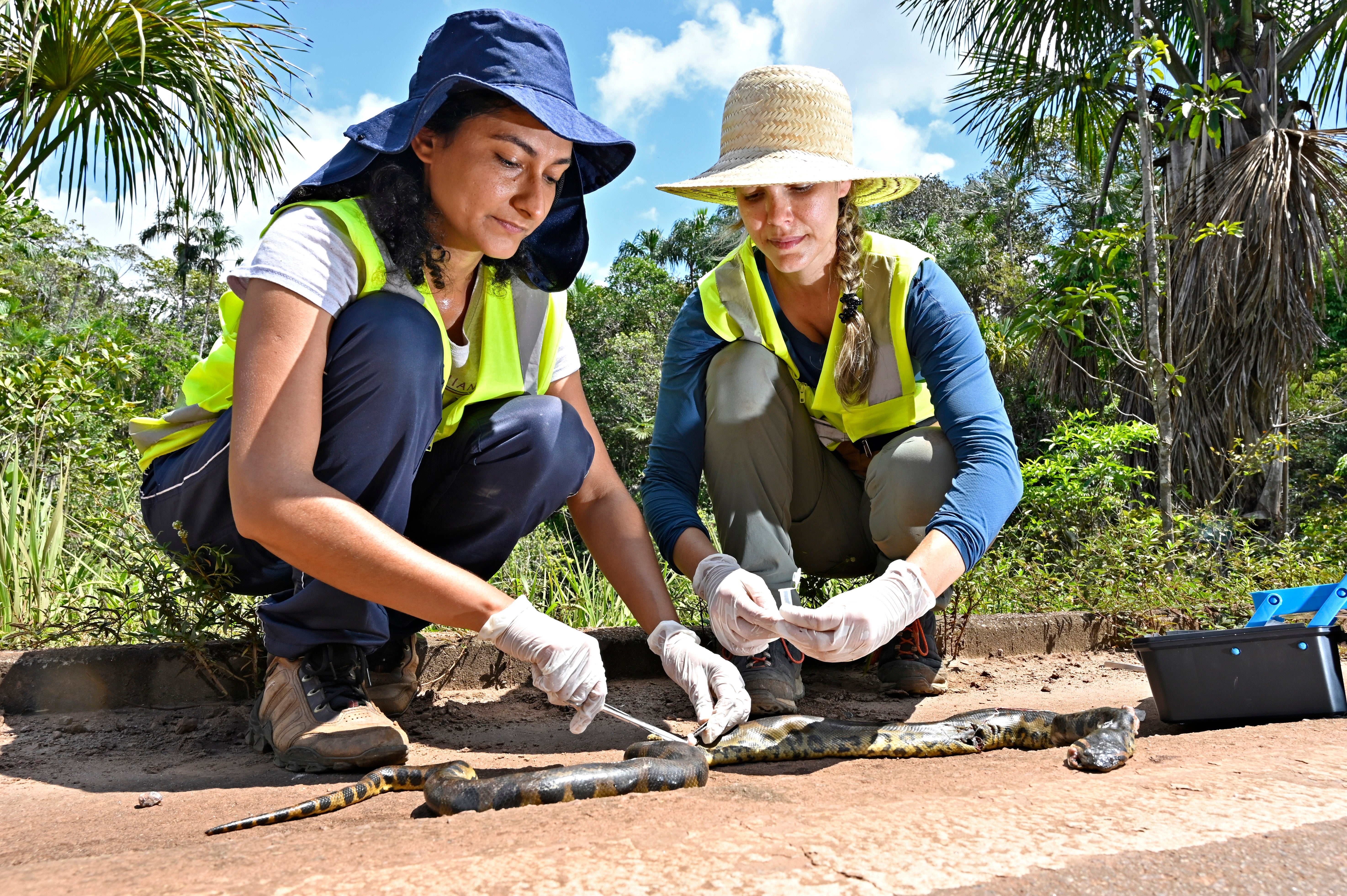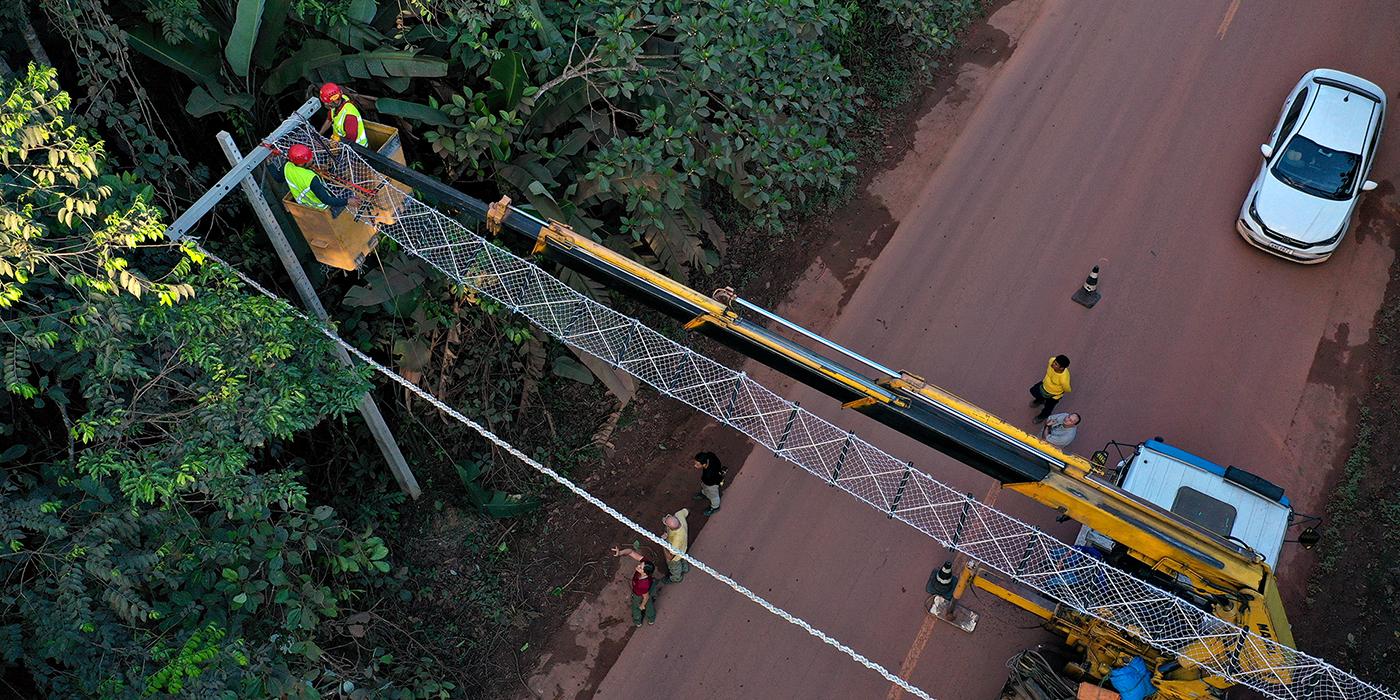Reconecta: Bridging the Gap for Amazonian Wildlife
When roads and highways are built, human communities are transformed. However, the ecological effects of transportation infrastructure can have a devastating impact on wildlife and biodiversity.
The Amazon Basin is an incredibly rich and biodiverse region, home to thousands of species found nowhere else in the world. Economic development over the last few decades has led to a significant expansion of roads throughout the region that increase threats to the region's wildlife. Animal communities, particularly arboreal species, are vulnerable to fatal vehicle collisions when they cross roads. Roads also threaten wildlife indirectly by disrupting migration routes, fracturing habitat and isolating populations.
To minimize the negative effects of road development, scientists with the Smithsonian's National Zoo and Conservation Biology Institute’s Center for Conservation and Sustainability (CCS) are working to create practical, feasible, and scalable solutions to reduce the harmful impacts of roads and infrastructure on the Amazon’s rich biodiversity.
Led by Smithsonian research fellow Dr. Fernanda Abra, Dr. Alfonso Alonso from the CCS, Tremaine Gregory from the World Wildlife Fund, and other partners, the Reconecta project aims to reduce animal mortality and restore connectivity in the fragmented Amazon forests through innovative, nature-positive solutions.

Researchers with the Reconecta project monitor and record animals killed in vehicular strikes.
A key focus of Reconecta’s conservation strategy is the creation and monitoring of canopy bridges—elevated pathways that reconnect aboveground forest habitats by providing safe crossing opportunities for various arboreal species, including monkeys, opossums, squirrels and other mammals.
In addition to protecting wildlife, Reconecta aims to create a culture of sustainable infrastructure within the Amazon's road network. Working in collaboration with the Waimiri-Atroari Indigenous community, the Federal University of Amazonas, the Brazilian government and other partners, the Reconecta project has installed and monitored 30 artificial canopy bridges along a major highway in northern Brazil. Although the ecological effects are still being analyzed, the initial results are promising: hundreds of crossings representing eight arboreal species, including the golden-handed tamarin, have been recorded.










